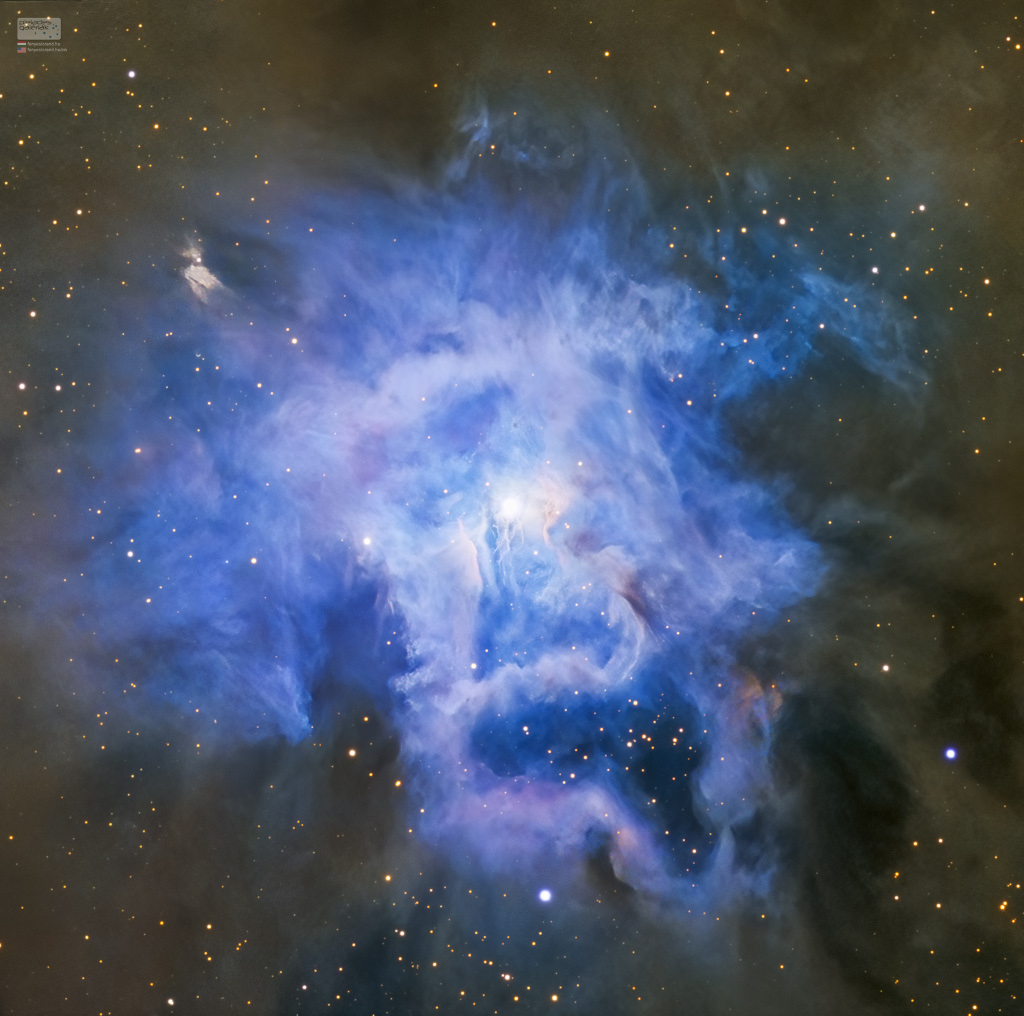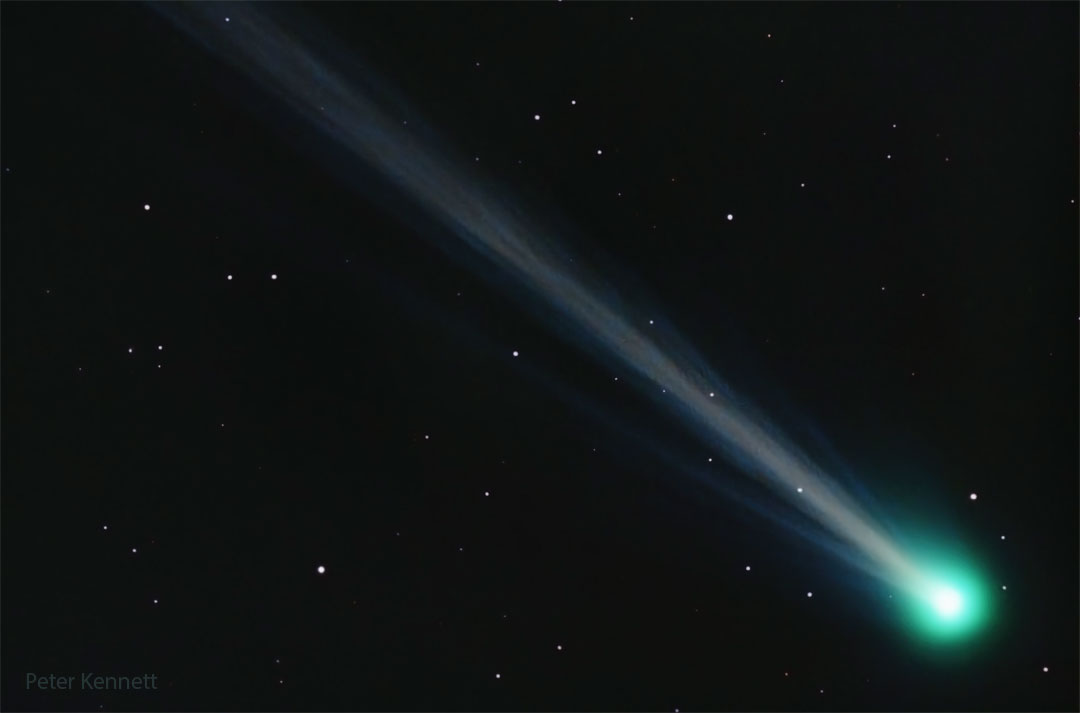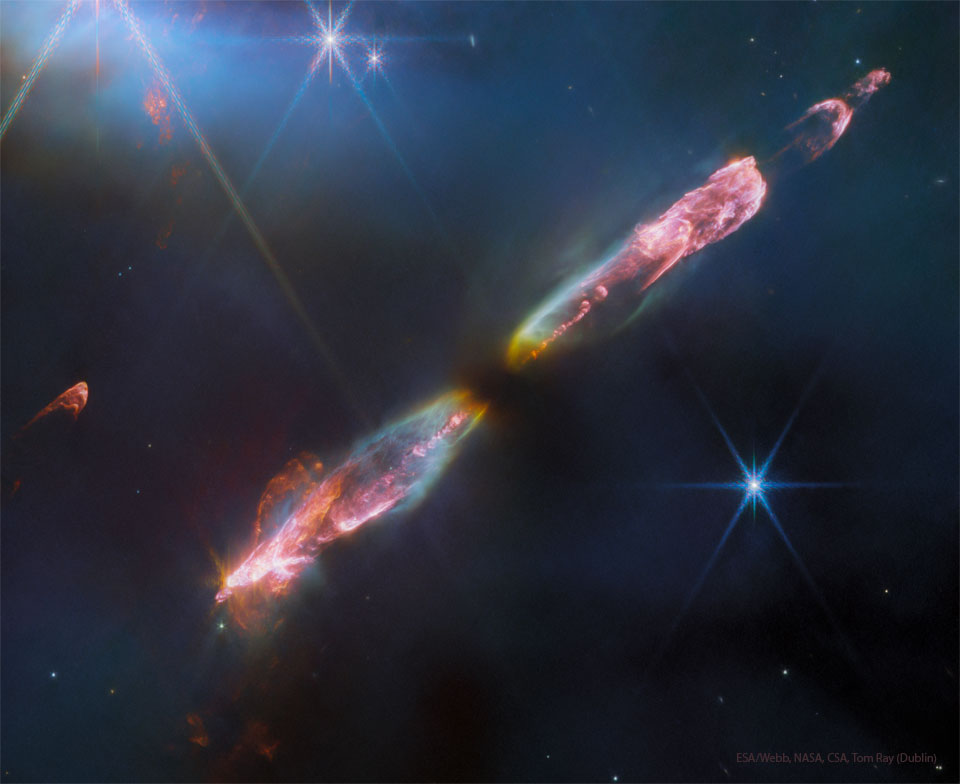Blog
These cosmic clouds have blossomed 1,300 light-years away in the fertile starfields of theconstellation Cepheus. Called the Iris Nebula, NGC 7023 is not the only nebula to evoke the imagery of flowers. Still, this deep telescopic image shows off the Iris Nebula’s range of colors and symmetries embedded in surrounding fields of interstellar dust. Within the Iris itself, dusty nebular material surrounds a hot, young star. The dominant color of the brighter reflection nebula is blue, characteristic of dust grains reflecting starlight. Central filaments of the reflection nebula glow with a faint reddish photoluminescence as some dust grains effectively convert the star’s invisible ultraviolet radiation to visible red light. Infraredobservations indicate that this nebula contains complex carbon molecules known as PAHs. The dusty blue petals of the Iris Nebula span about six light-years. 
Henry Butler (September 21, 1948 – July 2, 2018) was an American jazzand blues pianist. He learned piano, drums, and saxophone in school. He received a college degree and graduate degree and taught at the New Orleans Center for Creative Arts. He worked as a soloist and in groups in Los Angeles and New York City. Despite his blindness, he spent time as a photographer and had his work exhibited in galleries.
more...more...Charles Thomas Potter (September 21, 1918 – March 1, 1988 Philadelphia, PA) wasan American jazz double bass player, best known for having been a member of Charlie Parker‘s “classic quintet”, with Miles Davis, between 1947 and 1950.
Leonard Norman Cohen CC GOQ(September 21, 1934 – November 7, 2016) was a Canadian singer-songwriter, poet, and novelist. Themes commonly explored throughout his work include faith and mortality, isolation and depression, betrayal and redemption, social and political conflict, and sexual and romantic love, desire, regret, and loss. He was inducted into the Canadian Music Hall of Fame, the Canadian Songwriters Hall of Fame, and the Rock and Roll Hall of Fame. He was invested as a Companion of the Order of Canada, the nation’s highest civilian honour. In 2011, he received one of the Prince of Asturias Awards for literature and the ninth Glenn Gould Prize.
more...
Comet Nishimura is growing. More precisely, the tails C/2023 P1 (Nishimura) are growing as it nears the Sun. Discovered only last month, the comet is already near naked eye brightness as it now moves inside the Earth’s orbit. The comet will be nearest the Earth next week, but nearest the Sun the week after — on September 17. Speculation holds that expelled ice and dust from Comet Nishimura‘s last visit to the inner Solar System may have created the Sigma Hydrids meteor shower which peaks yearly in December. If so, then this meteor shower may become more active, refreshed with new comet debris. Pictured, Comet Nishimura was captured from Edgewood, New Mexico, USAfour nights ago, showing a long ion tail structured by interactions with the Sun’s wind. Look for this comet near your eastern horizon just before sunrise for the next few mornings, but very near your western horizon just after sunset next week — as its coma continues to brighten and its tails continue to grow.

Billy Bang (September 20, 1947 – April 11, 2011), born William Vincent Walker, was an American free jazzviolinist and compose.
Bang’s family moved to New York City’s Bronx neighborhood while he was still an infant, and as a child he attended a special school for musicians in nearby Harlem. At that school, students were assigned instruments based on their physical size. Bang was fairly small, so he received a violin instead of either of his first choices, the saxophone or the drums. It was around this time that he acquired the nickname of “Billy Bang”, derived from a popular cartoon character.
Bang studied the violin until he earned a hardship scholarship to the Stockbridge School in Stockbridge, Massachusetts.
Bang died on April 11, 2011. According to an associate, Bang had had lung cancer. He had been scheduled to perform on the opening day of the Xerox Rochester International Jazz Festival on June 10, 2011. He is buried at Woodlawn Cemetery, Bronx, New York.
more...Eric Gale (September 20, 1938 – May 25, 1994) was an American jazz and R&B guitarist.
Born in Bedford–Stuyvesant, Brooklyn, New York, Gale grew up in a diverse household. His paternal grandfather was from Yorkshire, England. He had extended family in Barbados and Venezuela. Gale often visited the U.K. and Venezuela as an adolescent, which influenced his style into adulthood. He was fluent in Spanish.
Gale started playing the guitar at age 12. At that time, he skipped junior high school. Soon after, in high school, he visited John Coltrane‘s home after school and sat in on jam sessions, which inspired Gale’s readily recognizable style. Gale received his Master of Science in chemistry at Niagara University. He was also on the football team. Later, Gale was pursued by Frank Sinatra to work on the hit song “My Way”, as mentioned in Frank Sinatra’s autobiography. Gale decided to pursue a musical career full-time instead of getting his Ph.D. in Chemistry. Gale died of lung cancer in 1994 at the age of 55 and is survived by his wife Masako Murakami-Gale, their three daughters, and two grandchildren.
more...Elvira Louise Redd (September 20, 1928 – February 6, 2022) was an American jazz alto saxophone player, vocalist and educator. She was active from the early 1950s and was known primarily for playing in the bluesstyle. She was highly regarded as an accomplished veteran, and performed with Count Basie, Rahsaan Roland Kirk, Linda Hopkins, Marian McPartland and Dizzy Gillespie.
Elvira Louise Redd was born on September 28, 1928 in Los Angeles, California, the daughter of New Orleans jazz drummer and Clef Club co-founder Alton Redd and Mattie Redd (née Thomas). Her mother played saxophone, although not professionally, and her brother was a percussionist. She was deeply influenced during her formative years by her father, who was one of the leading figures on the Central Avenue jazz scene. Another important musical mentor was her paternal great aunt Alma Hightower, who convinced the 10-year-old Redd to switch from piano to saxophone. During junior high school, Redd played alto saxophone in a band with Melba Liston and Dexter Gordon.
more...Foreststorn “Chico” Hamilton (September 20, 1921 – November 25, 2013) was an American jazz drummer and bandleader. He came to prominence as sideman for Lester Young, Gerry Mulligan, Count Basie, and Lena Horne. Hamilton became a bandleader, first with a quintet featuring the cello as a lead instrument, an unusual choice for a jazz band in the 1950s, and subsequently leading bands that performed cool jazz, post bop, and jazz fusion.
Foreststorn Hamilton was born in Los Angeles, California, one of three brothers, one of whom was actor Bernie Hamilton.
more...Do stars always create jets as they form? No one is sure. As a gas cloud gravitationally contracts, it forms a disk that can spin too fast to continue contracting into a protostar. Theorists hypothesize that this spin can be reduced by expelling jets. This speculation coincides with known Herbig-Haro (HH) objects, young stellar objects seen to emit jets — sometimes in spectacular fashion. Pictured is Herbig-Haro 211, a young star in formation recently imaged by the Webb Space Telescope (JWST) in infrared light and in great detail. Along with the two narrow beams of particles, red shock waves can be seen as the outflows impact existing interstellar gas. The jets of HH 221 will likely change shape as they brighten and fade over the next 100,000 years, as research into the details of star formation continues.

Ellen Naomi Cohen (September 19, 1941 – July 29, 1974), known professionally as Mama Cass and later on as Cass Elliot, was an American singer and voice actress. She was a member of the singing group the Mamas & the Papas. After the group broke up, Elliot released five solo albums. In 1998, she was posthumously inducted into the Rock and Roll Hall of Fame for her work with the Mamas & the Papas.
Ellen Naomi Cohen was born in Baltimore, Maryland, on September 19, 1941, the daughter of Philip (died 1962) and Bess Cohen (née Levine; 1915–1994).
Elliot retired to an apartment in Mayfair at Curzon Place at which singer-songwriter Harry Nilsson allowed her to stay. Several hours after Elliot left Jack Martin’s cocktail party she died in her sleep at age 32. According to Keith Simpson, who conducted her autopsy, she died of a heart attack, and there were no drugs in her system. Elliot died in Flat 12, 9 Curzon Place (later Curzon Square), Shepherd Market, Mayfair, London, owned by Harry Nilsson. Four years later, The Who‘s drummer Keith Moon died in the same bedroom, also aged 32 years.
more...Henry Kaiser (born September 19, 1952) is an American guitarist and composer, known as an idiosyncratic soloist, a sideman, an ethnomusicologist, and a film score composer. Recording and performing prolifically in many styles of music, Kaiser is a fixture on the San Francisco Bay Area music scene. He is considered a member of the “second generation” of American free improvisers. He is married to Canadian artist Brandy Gale. He is the son of Henry J. Kaiser Jr. and the grandson of industrialist Henry J. Kaiser.
In 1977, Kaiser founded Metalanguage Records with Larry Ochs (Rova Saxophone Quartet) and Greg Goodman. In 1979 he recorded With Friends Like These with Fred Frith, a collaboration which continued over the next 20 years. In 1983 they recorded Who Needs Enemies, and in 1987 the compilation album With Enemies Like These, Who Needs Friends? They joined with fellow experimental musicians John French, and English folk-rocker Richard Thompson to form French Frith Kaiser Thompson for two eclectic albums, Live, Love, Larf & Loaf (1987) and Invisible Means (1990). In 1999 Frith and Kaiser released Friends & Enemies, a compilation of their two Metalanguage albums along with additional material from 1984 and 1999.
more...Muhal Richard Abrams (born Richard Lewis Abrams; September 19, 1930 – October 29, 2017) was an American educator, administrator, composer, arranger, clarinetist, cellist, and jazz pianist in the free jazzmedium. He recorded and toured the United States, Canada and Europe with his orchestra, sextet, quartet, duo and as a solo pianist. His musical affiliations constitute a “who’s who” of the jazz world, including Max Roach, Dexter Gordon, Eddie “Lockjaw” Davis, Art Farmer, Sonny Stitt, Anthony Braxton, and The Art Ensemble of Chicago.
Abrams’s mother, Edna, was born in Memphis. His father, Milton, was born in Alabama and moved with his parents to Chicago. Richard Lewis Abrams was born there, the second of nine children, on September 19, 1930. His father became a self-employed handyman; his mother was a housewife.
more...More Posts
- Elvin Jones Day
- World Music with Badie Mohd Al Tayeb
- Daily Roots with Torch
- The Cosmos with RCW 120
- Butch Warren Day
- James Clay Day
- Wilbur Ware Day
- World Music with Tsedenia Gebremarkos
- Daily Roots with the Impact All Stars
- The Cosmos with NGC 2080
- Buddy Holly Day
- Little Milton Day
- Sonny Rollins Day
- World Music with Paco de Lucia
- Daily Roots with David Madden and Augustus Pablo
- The Cosmos with NGC 6960
- Charles Moffett
- Jimmy Reed Day
- World Music with Shashmaqam
- Daily Roots with Junior Brown